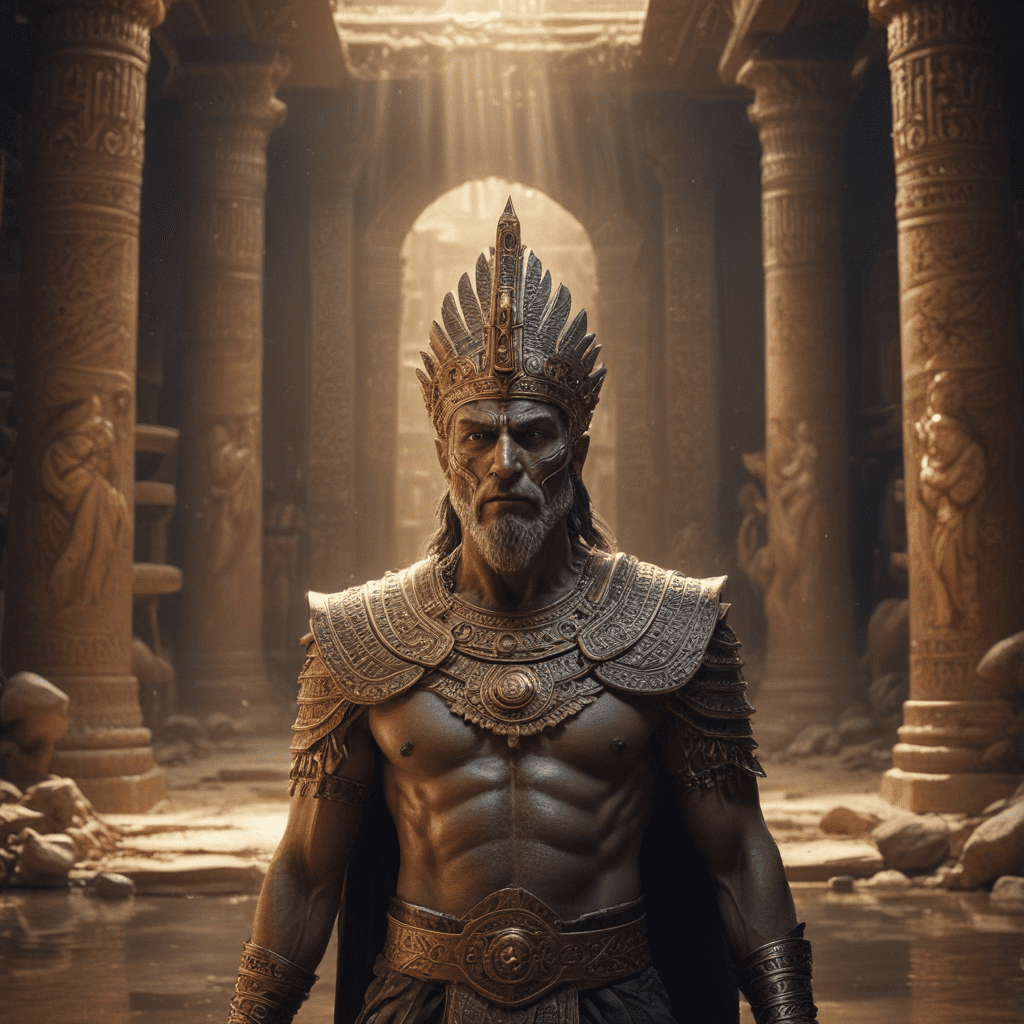1. Introduction:
A Glimpse into the Mesopotamian Underworld
Mesopotamian religion, a rich tapestry of beliefs and practices, flourished in the ancient lands between the Tigris and Euphrates rivers. At its heart lay a complex understanding of the cosmos, encompassing the heavens, the earth, and the underworld. Within this subterranean realm, where the sun never shone, resided Ninazu, the formidable god who held dominion over the dead.
Ninazu: The Lord of the Underworld
In Mesopotamian mythology, Ninazu stands as the primary deity of the underworld. His name, meaning "lord of the land of the living" or "lord of the netherworld," aptly reflects his role as the ultimate authority over the realm of the deceased. As the guardian of this shadowy domain, Ninazu wielded immense power, determining the fate of souls and ensuring cosmic order.
6. Theological Significance:
Ninazu's position as the lord of the underworld granted him immense theological significance within the Mesopotamian pantheon. His role in overseeing the realm of the dead directly impacted the lives of Mesopotamians, who believed that their actions in this life would determine their fate in the afterlife. Ninazu's judgment on souls ensured that cosmic order was maintained and that individuals were held accountable for their deeds.
Furthermore, Ninazu's connection to both creation and death imbued him with a profound understanding of the cyclical nature of life and death. He was seen as a powerful mediator between the realms of the living and the dead, bridging the gap between the two and ensuring the continuity of existence. This role further solidified his importance within the Mesopotamian religious framework.
The concept of justice was inextricably linked to Ninazu's reign in the underworld. It was believed that he judged the souls of the deceased fairly and impartially, weighing their good deeds against their transgressions. This belief instilled a sense of moral responsibility among Mesopotamians, who strived to live righteously in order to secure a favorable judgment upon their death.
Ninazu's association with the underworld also held profound implications for the human condition. The Mesopotamians viewed death not as an end, but as a transition into a new phase of existence. Ninazu's role as the guardian of this next stage offered both fear and hope – fear of the unknown, but also hope for a just and meaningful afterlife.
7. Historical Development:
The worship of Ninazu spanned several millennia, evolving and adapting throughout the course of Mesopotamian history. During the Early Dynastic Period (circa 3000-2300 BCE), Ninazu emerged as a prominent deity in the pantheon, with his cult centers flourishing in major cities like Girsu and Nippur. His popularity grew steadily in subsequent periods, with his influence extending throughout Mesopotamia.
The rise and fall of empires and political changes witnessed fluctuations in the intensity of Ninazu's worship. However, his fundamental role as the lord of the underworld remained constant, ensuring his enduring significance within the Mesopotamian religious landscape. Despite the decline of Mesopotamian civilization, remnants of Ninazu's worship persisted in later traditions, demonstrating the enduring impact of his mythology.
8. Cultural Legacy:
Ninazu's legacy extended far beyond the confines of Mesopotamian religion. His influence can be discerned in various aspects of Mesopotamian culture, including art, literature, and legal systems. Artistic depictions of Ninazu often emphasized his imposing stature and his association with the underworld. Literary works, such as the Epic of Gilgamesh, alluded to his reign over the realm of the dead.
Ninazu's association with justice and morality also left its mark on Mesopotamian legal systems. The concept of a just and impartial judgment in the afterlife influenced the development of legal codes and ethical principles. Moreover, Ninazu's role as a mediator between the living and the dead inspired notions of ancestral veneration and the importance of maintaining proper rituals to appease the spirits of the deceased.
9. Modern Relevance:
While the active worship of Ninazu has ceased, his mythology continues to captivate and inspire scholars and enthusiasts alike. His story provides valuable insights into the Mesopotamian worldview, shedding light on their beliefs about death, the afterlife, and the nature of existence.
Ninazu's enduring relevance can be attributed to the universal themes explored in his mythology. His role as a judge of the dead resonates with concepts of justice and accountability that remain pertinent in contemporary society. Similarly, his association with the underworld invites contemplation on the mysteries of life and death, questions that continue to intrigue humanity.
10. Conclusion:
Ninazu, the formidable lord of the Mesopotamian underworld, played a pivotal role in shaping the religious beliefs and cultural practices of ancient Mesopotamia. His enduring legacy continues to inspire and inform our understanding of the Mesopotamian worldview and the human fascination with the mysteries of death and the afterlife.



